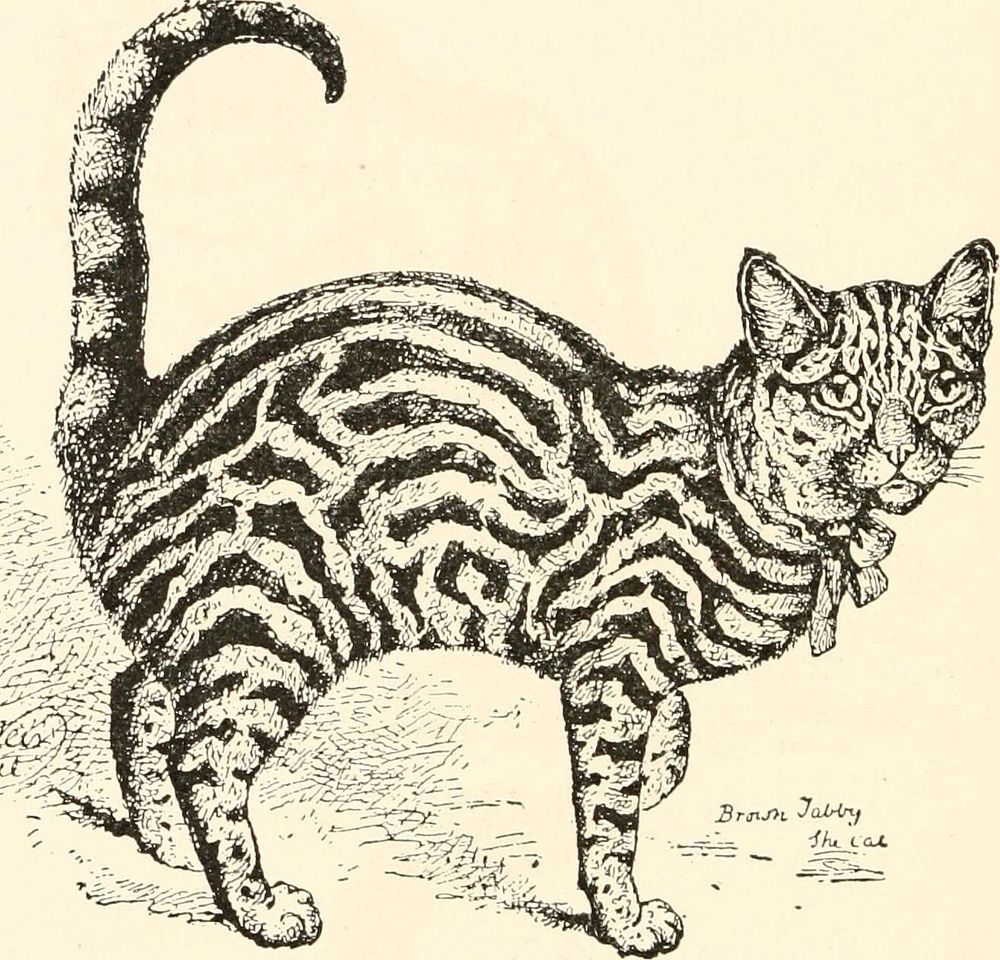https://creativecommons.org/publicdomain/zero/1.0/https://www.rawpixel.com/image/9975414

Identifier: catguidetoclassi00huid2 (find matches)Title: The cat, a guide to the classification and varieties of cats and a short tratise upon their care, diseases, and treatmentYear: 1895 (1890s)Authors: Huidekoper, Rush Shippen, 1854-1901Subjects: CatsPublisher: New York : D. Appleton and companyContributing Library: New York Public LibraryDigitizing Sponsor: MSNView Book Page: Book ViewerAbout This Book: Catalog EntryView All Images: All Images From BookClick here to view book online to see this illustration in context in a browseable online version of this book.Text Appearing Before Image:y; and from the similarity of thestripes of the banded and the briudle cats, thelatter were called ^ Tabby. Weir says that inthe south of England (Norfolk and Suffolk) theTabby is called a Cyprus Cat; and he found inBaileys Dictionary (1730 a.d.) that Cypruswas a kind of cloth made of silk and hair, show-ing wavy lines on it, and coming from Cyprus.Evidently, therefore, the Taffeta or Tabby indicates the strij^ing, and not the color. The Tabby presents numerous varieties incolor and shade, but may be divided into fourgeneral classes: 1. The Brown Tabby. 2. The Spotted Tabby. 3. The Blue or Silver Tabby. 4. The Red Tabby. The Brown Tahlnj. The Brown Tabby has a ground color ofa rich, reddish dark brown, with no white,and even, regular bars and bands of solid,shining black over the face, head, breast, sides,back, belly, legs, and tail. The face, legs, 54 THE CAT breast, and belly should have more of a richred orange tint than the back. The bandsshould be graceful in curve, distinct, andText Appearing After Image:Fig. 13.—A Well-marked Tabby. clearly defined, so that there is a perfect de-marcation in the line between i\\Q black andthe brown, and not mixed and blurred. TheBanded Tabby should not be spotted in anyway, beyond a few spots which almost always VARIETIES 55Note About ImagesPlease note that these images are extracted from scanned page images that may have been digitally enhanced for readability - coloration and appearance of these illustrations may not perfectly resemble the original work.
Original public domain image from Wikimedia Commons
Public DomainFree CC0 image for Personal and Business use